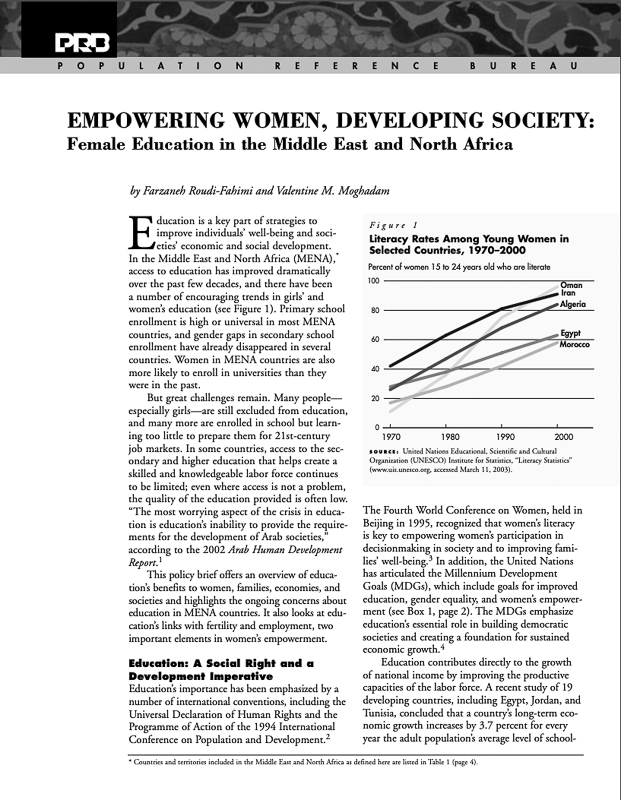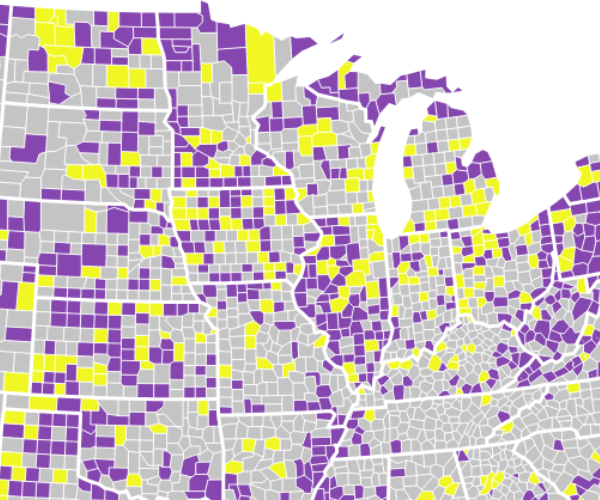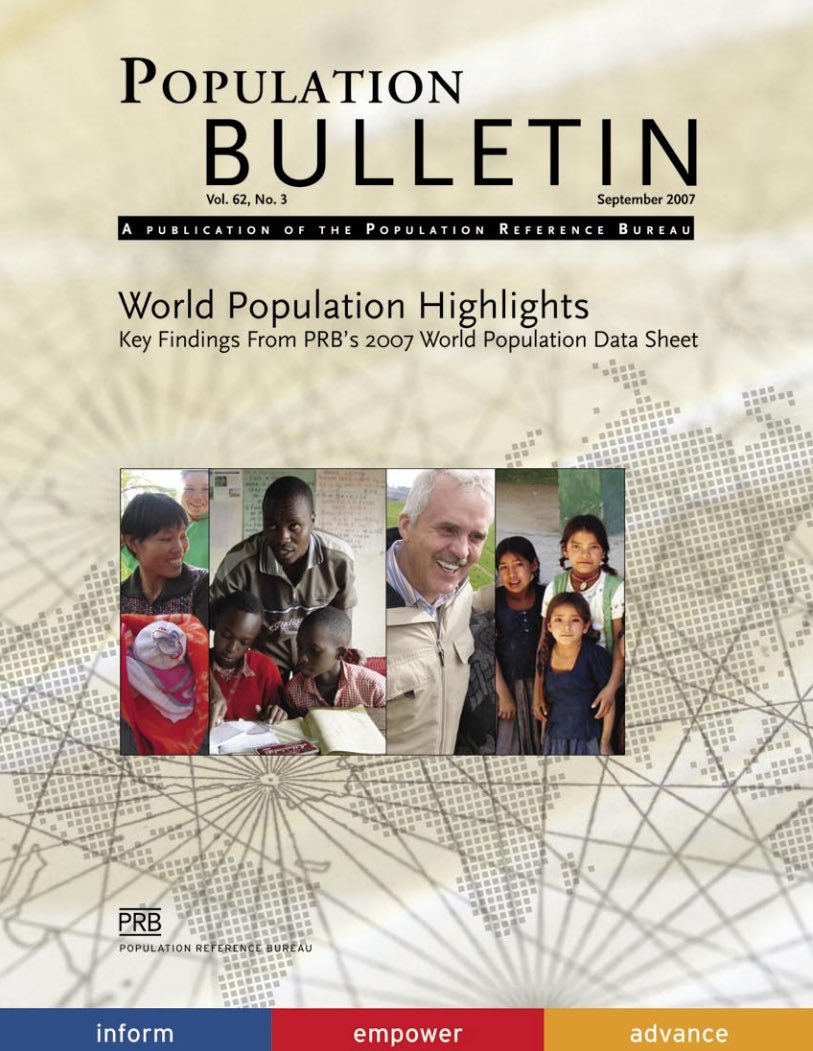535 Search Results Found For : "climate change"

Report. Empowering Women, Developing Society: Female Education in the Middle East and North Africa
(2003) Education is a key part of strategies to improve individuals' well-being and societies' economic and social development.
View Details
Array
(
[ID] => 4734
[id] => 4734
[title] => EmpoweringWomeninMENA
[filename] => EmpoweringWomeninMENA.pdf
[filesize] => 141317
[url] => https://www.prb.org/wp-content/uploads/2003/11/EmpoweringWomeninMENA.pdf
[link] => https://www.prb.org/resources/empowering-women-developing-society-female-education-in-the-middle-east-and-north-africa/empoweringwomeninmena/
[alt] =>
[author] => 15
[description] =>
[caption] => EMPOWERING WOMEN, DEVELOPING SOCIETY:
Female Education in the Middle East and North Africa
[name] => empoweringwomeninmena
[status] => inherit
[uploaded_to] => 4717
[date] => 2020-11-23 21:25:59
[modified] => 2020-11-23 21:26:17
[menu_order] => 0
[mime_type] => application/pdf
[type] => application
[subtype] => pdf
[icon] => https://www.prb.org/wp-includes/images/media/document.png
)
Download
(0.1 MB)

Immigration Saved Hundreds of U.S. Counties From Population Loss
Over 450 U.S. counties would have lost population between 2023 and 2024 without immigration, according to an analysis of new data from the U.S. Census Bureau.

World Population Highlights 2007: Malnutrition
View Details
Array
(
[ID] => 13858
[id] => 13858
[title] => Population-Bulletin-2007-62.3Highlights
[filename] => Population-Bulletin-2007-62.3Highlights-1.pdf
[filesize] => 994482
[url] => https://www.prb.org/wp-content/uploads/2007/08/Population-Bulletin-2007-62.3Highlights-1.pdf
[link] => https://www.prb.org/resources/world-population-highlights-2007-migration/population-bulletin-2007-62-3highlights-4/
[alt] =>
[author] => 15
[description] =>
[caption] =>
[name] => population-bulletin-2007-62-3highlights-4
[status] => inherit
[uploaded_to] => 13855
[date] => 2021-01-25 00:30:40
[modified] => 2021-01-25 00:30:40
[menu_order] => 0
[mime_type] => application/pdf
[type] => application
[subtype] => pdf
[icon] => https://www.prb.org/wp-includes/images/media/document.png
)
Download
(1.0 MB)

U.S. Household Composition Shifts as the Population Grows Older; More Young Adults Live With Parents
Household size and composition play an important role in the economic and social well-being of families and individuals.
